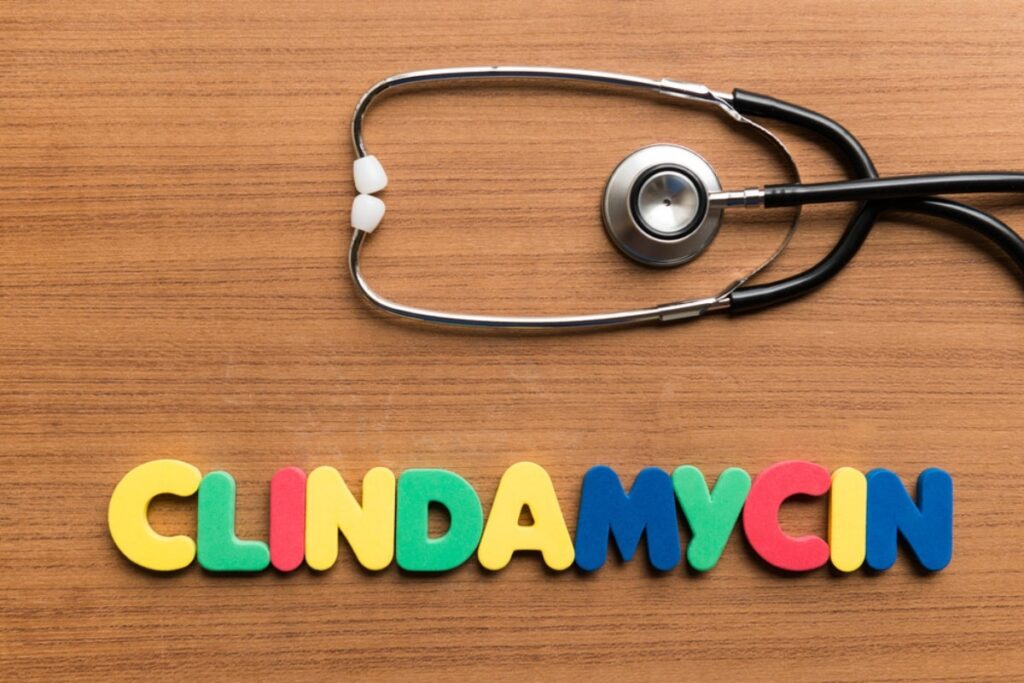Acne is one of the most common skin conditions, affecting millions worldwide. From occasional breakouts to persistent, severe cases, acne can be frustrating and challenging to manage. Many treatment options exist, but clindamycin for acne stands out for its effectiveness. This topical or oral antibiotic is widely prescribed to combat acne-causing bacteria and reduce inflammation.
But how does it work, and what kind of results can you expect? Let’s dive into the details of clindamycin for acne and explore everything you need to know.
Understanding Acne and Its Causes
Before delving into clindamycin for pimples, it’s essential to understand what causes acne in the first place. Acne develops when hair follicles become clogged with oil (sebum) and dead skin cells. This blockage creates the perfect environment for bacteria, particularly Propionibacterium acnes (now called Cutibacterium acnes), to thrive. As the bacteria multiply, inflammation occurs, leading to red, swollen pimples, blackheads, whiteheads, and, in severe cases, painful cysts.
Several factors contribute to acne, including:
- Hormonal fluctuations (common during puberty, pregnancy, and menstruation)
- Excessive oil production
- Bacterial overgrowth
- Diet and lifestyle choices
- Genetics
Now that we have a basic understanding of acne, let’s explore how clindamycin effectively combats breakouts.

How Clindamycin Works for Acne Treatment
How clindamycin works is by targeting the bacteria responsible for acne flare-ups. As an antibiotic, it inhibits the growth of Cutibacterium acnes, preventing bacterial replication and reducing inflammation. Controlling bacterial proliferation helps minimize the severity of breakouts and prevents new pimples from forming.
Clindamycin also has anti-inflammatory properties that reduce redness and swelling, making acne lesions less noticeable and painful. It is commonly prescribed in two primary forms:
- Topical Clindamycin: Applied directly to the skin through gels, lotions, or solutions.
- Oral Clindamycin: Taken as a capsule or tablet in cases of more severe, widespread acne.
Regardless of the form used, what does clindamycin do for acne is essentially the same—it fights bacteria and reduces inflammation, leading to clearer skin over time.
What to Expect When Using Clindamycin for Acne
Many people wonder about clindamycin results and how long it takes to see improvements. The answer depends on individual skin types, acne severity, and medication consistency. However, here’s a general timeline of what you can expect:
- First few weeks: You may not see immediate changes. In some cases, acne may appear to worsen slightly as bacteria are being eliminated from the skin.
- 4-6 weeks: Noticeable reduction in inflammation and the frequency of breakouts.
- 8-12 weeks: Significant improvement in overall skin texture and clarity.
For best results, dermatologists often recommend combining clindamycin for acne with other treatments, such as benzoyl peroxide, retinoids, or oral medications, depending on the severity of the condition.
Potential Side Effects and Precautions
While clindamycin for pimples is generally well-tolerated, some users may experience mild side effects, including:
- Dryness and peeling of the skin
- Redness or irritation
- Burning or itching sensation
In rare cases, prolonged use of oral clindamycin can lead to more severe side effects, such as antibiotic resistance or gastrointestinal issues. To minimize the risk of resistance, clindamycin is often combined with benzoyl peroxide, which helps prevent bacterial adaptation.
Follow your healthcare provider’s instructions carefully when using clindamycin for acne to avoid overuse or sudden discontinuation of the treatment.
Maximizing the Benefits of Clindamycin for Acne
To get the best clindamycin results, follow these tips:
- Use it consistently: Apply or take the medication as prescribed without skipping doses.
- Pair it with complementary treatments: Consider using non-comedogenic moisturizers, benzoyl peroxide, or retinoids to enhance its effects.
- Follow a good skincare routine: Cleanse your skin with a gentle cleanser and avoid harsh scrubbing or irritating products.
- Stay patient: Acne treatment takes time, so don’t expect overnight results.
- Consult your dermatologist: If you experience severe side effects or your acne doesn’t improve after 12 weeks, seek medical advice for alternative options.
Conclusion
When it comes to treating acne, finding the right solution can be overwhelming. Clindamycin for acne is a proven and effective treatment that targets acne-causing bacteria and inflammation, helping to clear up skin over time. By understanding how clindamycin works and what to expect, you can decide whether it’s the right choice for your skincare routine.
If you’re looking for personalized acne solutions, So So Thin offers expert guidance and treatment options to help you achieve clearer, healthier skin. Consult a dermatologist or healthcare professional before starting any new acne treatment. With patience and consistency, clearer skin is within reach!
